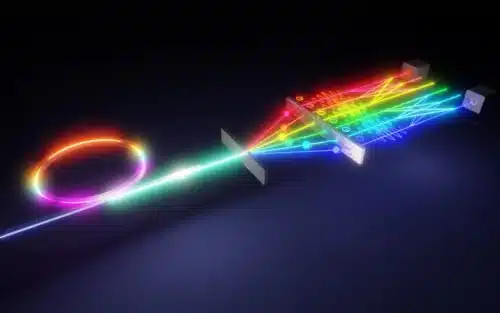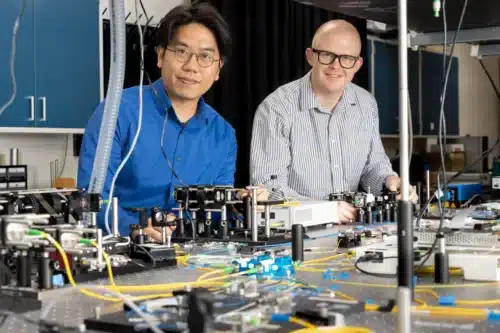- Researchers have created an efficient method for measuring high-dimensional qudits encoded in quantum frequency combs, a kind of photon source, on a single optical chip.
- Qudits have the ability to carry more data and are more noise-resistant.

“Qudit” may appear as an error, but it is not. It is, on the other hand, a less known relative of the qubit, or quantum bit. It has the ability to carry more data and is more noise-resistant, which are two crucial characteristics required to enhance the performance of quantum networks, quantum key distribution systems, and eventually the quantum internet. Qudit’s “d” refers to the variety of levels or values that may be encoded on a photon. Traditional qubits only have two levels, but by adding more levels, they become qudits.
Researchers from the Swiss Federal Institute of Technology Lausanne, or EPFL, Purdue University, and the U.S. Department of Energy’s Oak Ridge National Laboratory recently completed the characterization of an entangled pair of eight-level qudits that formed a 64-dimensional quantum space, quadrupling the previous record for discrete frequency modes.
Qudits are more difficult to measure when they are entangled, meaningthey share nonclassical correlations regardless of the physical distance between them. These are more suitable for carrying quantum information because they can follow a prescribed path through optical fiber without being significantly modified by their environment.
The experiment began by shining a laser into a micro-ring resonator — a circular, on-chip device fabricated by EPFL and designed to generate nonclassical light. The team used an electro-optic phase modulator to mix different frequencies of light and a pulse shaper to modify the phase of these frequencies.

To work backward and infer which quantum states produced frequency correlations ideal for qudit applications, the researchers developed a data analysis tool based on a statistical method called Bayesian inference and ran computer simulations at ORNL. This accomplishment builds on the team’s previous work focused on performing Bayesian analyses and reconstructing quantum states.
The researchers are now fine-tuning their measurement method to prepare for a series of experiments.
Reference: “Bayesian tomography of high-dimensional on-chip biphoton frequency combs with randomized measurements” by Hsuan-Hao Lu, Karthik V. Myilswamy, Ryan S. Bennink, Suparna Seshadri, Mohammed S. Alshaykh, Junqiu Liu, Tobias J. Kippenberg, Daniel E. Leaird, Andrew M. Weiner, and Joseph M. Lukens, 27 July 2022, Nature Communications.
DOI: 10.1038/s41467-022-31639-z






